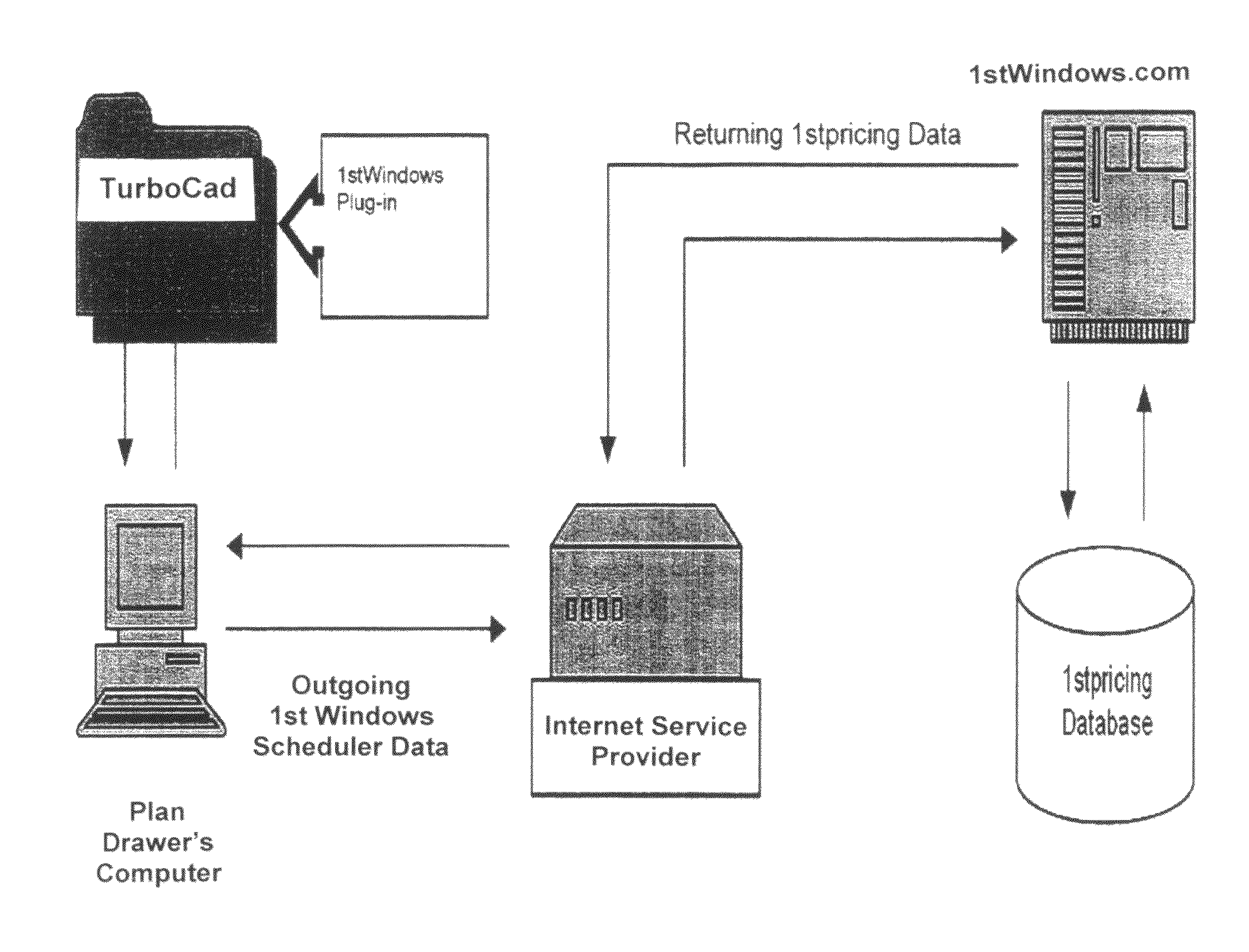Automated pricing and/or “green” indicating method and system
a technology of automatic pricing and green indicating, applied in the field of automatic pricing and/or green indicating methods and systems, can solve the problems of large construction time delay, and large construction cost overrun, so as to save architects and engineers time, quickly, efficiently and cost-effectively generate, and save construction costs
- Summary
- Abstract
- Description
- Claims
- Application Information
AI Technical Summary
Benefits of technology
Problems solved by technology
Method used
Image
Examples
Embodiment Construction
[0282]The present invention may be understood more readily by reference to the following detailed description of the preferred embodiments.
[0283]Definitions
[0284]For purposes of clarity, various terms and phrases used throughout this specification and the appended claims are defined in the manner set forth below. If a term or phrase used in this specification, or in the appended claims, is not defined below, or otherwise in this specification, the term or phrase should be given its ordinary meaning.
[0285]The term “about” as is used herein means approximately, as is known, and may be determined, by those having ordinary skill in the art.
[0286]The phrase “acid rain” as is used here means rain or any other form of precipitation (snow, sleet, hail and / or the like) that is unusually acidic, i.e., having an elevated level of hydrogen ions (low pH). It often has harmful effects on plants, aquatic animals, buildings and infrastructure through a process of wet deposition. Acid rain is caused...
PUM
 Login to View More
Login to View More Abstract
Description
Claims
Application Information
 Login to View More
Login to View More - R&D
- Intellectual Property
- Life Sciences
- Materials
- Tech Scout
- Unparalleled Data Quality
- Higher Quality Content
- 60% Fewer Hallucinations
Browse by: Latest US Patents, China's latest patents, Technical Efficacy Thesaurus, Application Domain, Technology Topic, Popular Technical Reports.
© 2025 PatSnap. All rights reserved.Legal|Privacy policy|Modern Slavery Act Transparency Statement|Sitemap|About US| Contact US: help@patsnap.com



